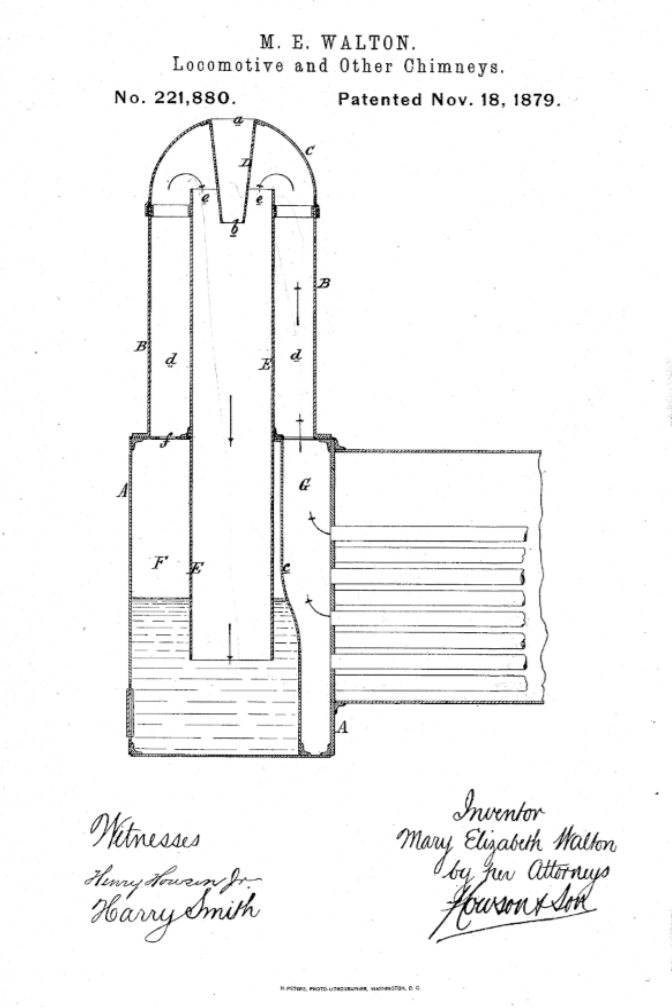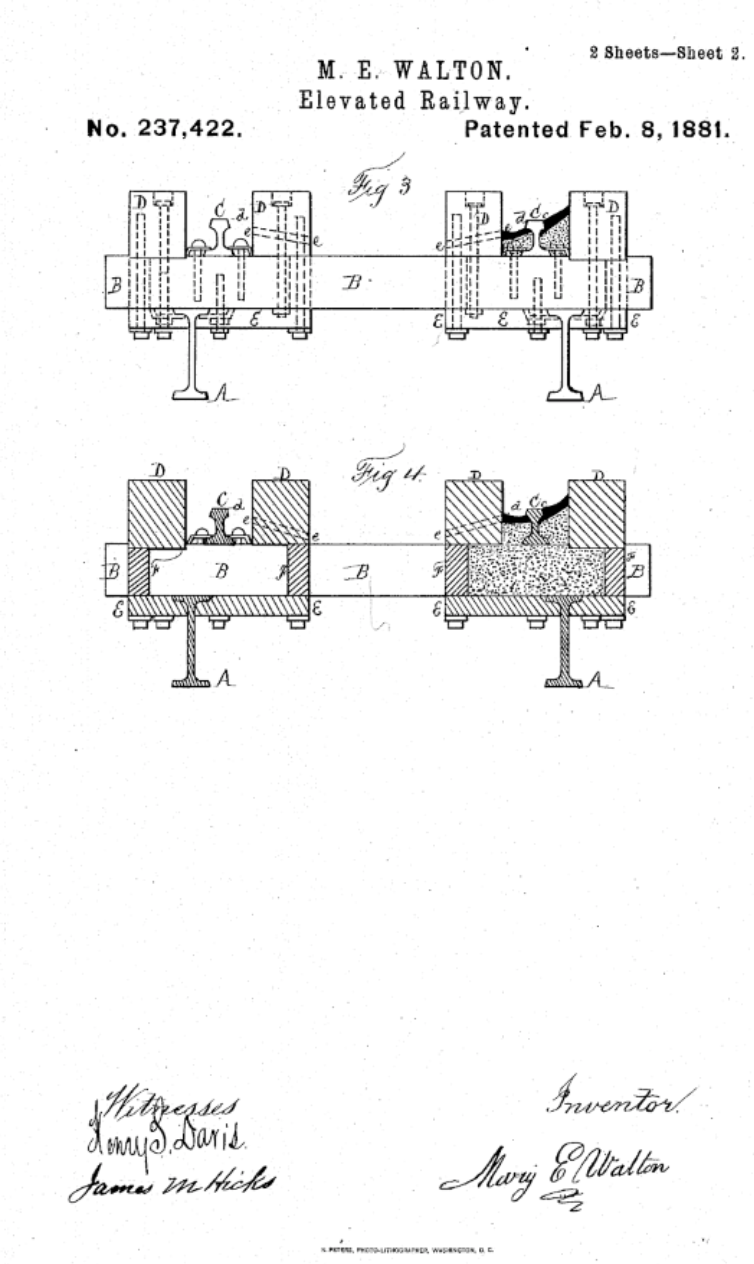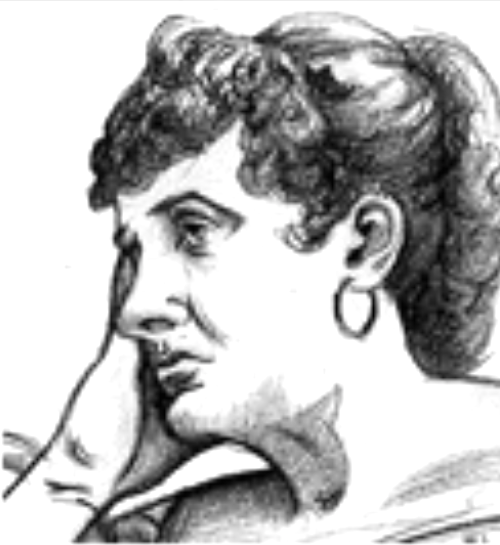Mary Walton

Mary Walton was a nineteenth-century inventor who received two patents for her pollution-fighting inventions. The Industrial Revolution created new problems in the world, the main ones being air and noise pollution. Walton was an independent thinker ahead of her time, determined to reduce the harmful effects of pollution.
Documentation about Mary Walton’s life is lacking due to the little recognition women received during this time period. However, a statement made in 1884 and published in Lexington, Kentucky’s, Weekly Transcript contains some valuable insight into her childhood. Walton is quoted as saying, “My father had no sons, and believed in educating his daughters. He spared no pains or expense to this end.”
After the Civil War in the late 1860s, the Industrial Revolution brought workers and immigrants into cities like New York for factory jobs. While these factory jobs improved livelihoods, smokestacks billowed thick plumes of smoke into the air. In addition to factory pollution, new elevated trains- that brought workers in and out of cities - made loud noises and released noxious smoke along the tracks. In 1879, Mary Walton owned a boarding house in New York City situated directly next to the elevated railway. Disgusted by the black smoke and roar of the train engines, Walton decided to solve the problems herself.

Walton’s invention (patent #221,880) deflected the emissions being produced from smokestacks into water tanks, where they were stored until they were flushed in the city sewage system. Several years later, Walton went on to address the rattling and clanging noises from the elevated trains. New York City even called upon America’s greatest inventors, including Thomas Edison, to come up with a solution.
After riding the trains for several days, Walton discovered that the tracks amplified the noise of the train because of the plain wooden supports they ran through. Walton set up a model railroad track in her basement, and discovered an excellent sound-dampening apparatus. She cradled the rails in a box-like framework of wood, which was painted with tar, lined with cotton, and filled with sand. As the vibrations from the rails were absorbed by the surrounding materials, so was the sound.
After successful trials, Walton received patent #237,422 on February 8, 1881. She sold the rights to New York City's Metropolitan Railroad, which thrived thanks to Walton's new, environment-friendly system. Walton herself was hailed as a hero---and as a feminist. As the Woman's Journal put it twenty years later: "The most noted machinists and inventors of the century [Thomas Edison among them] had given their attention to the subject without being able to provide a solution, when, lo, a woman's brain did the work..."


